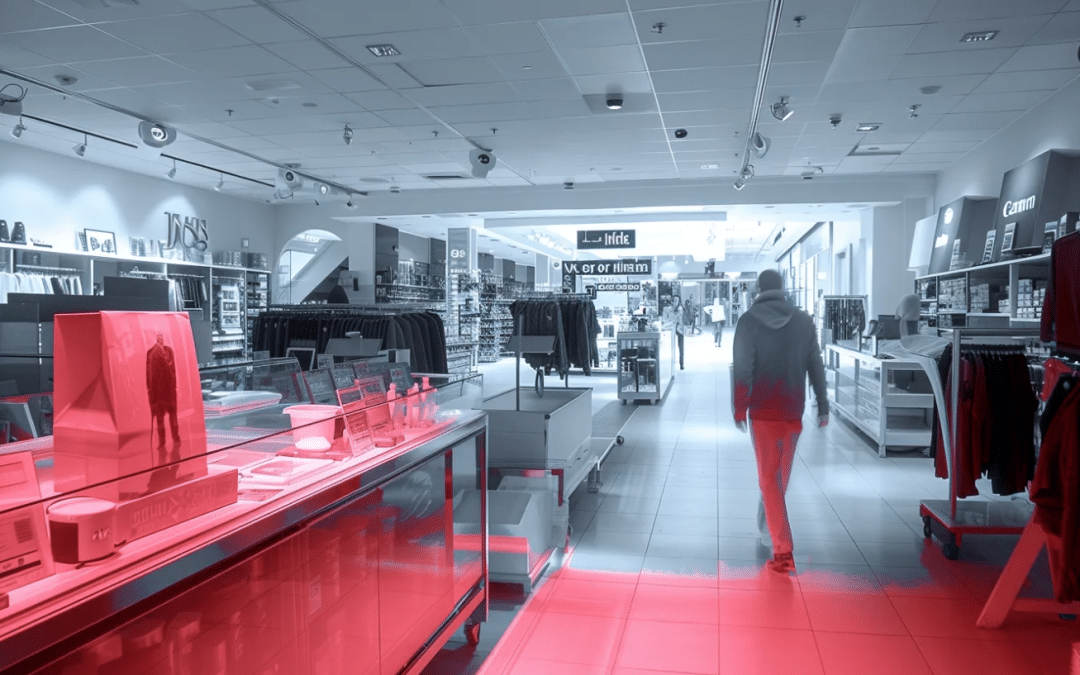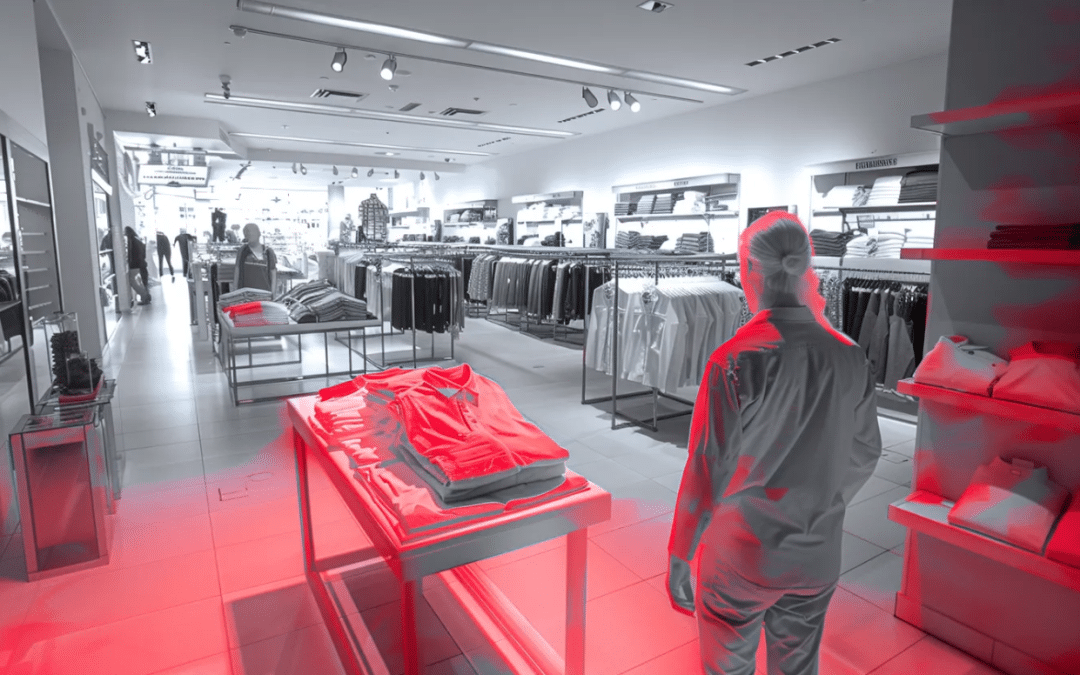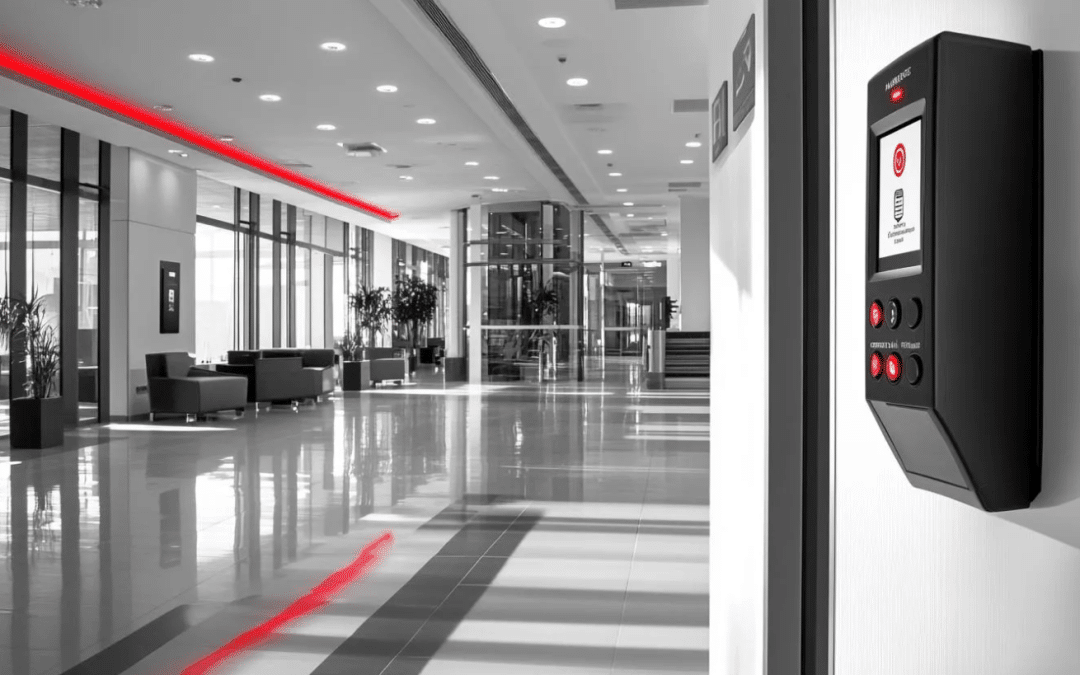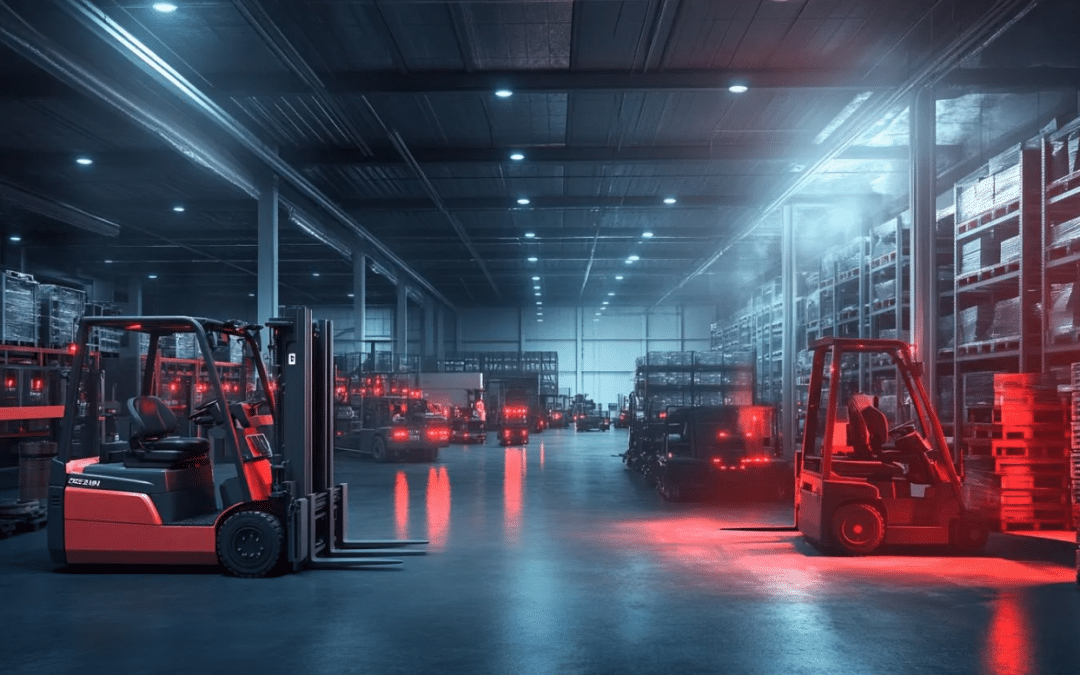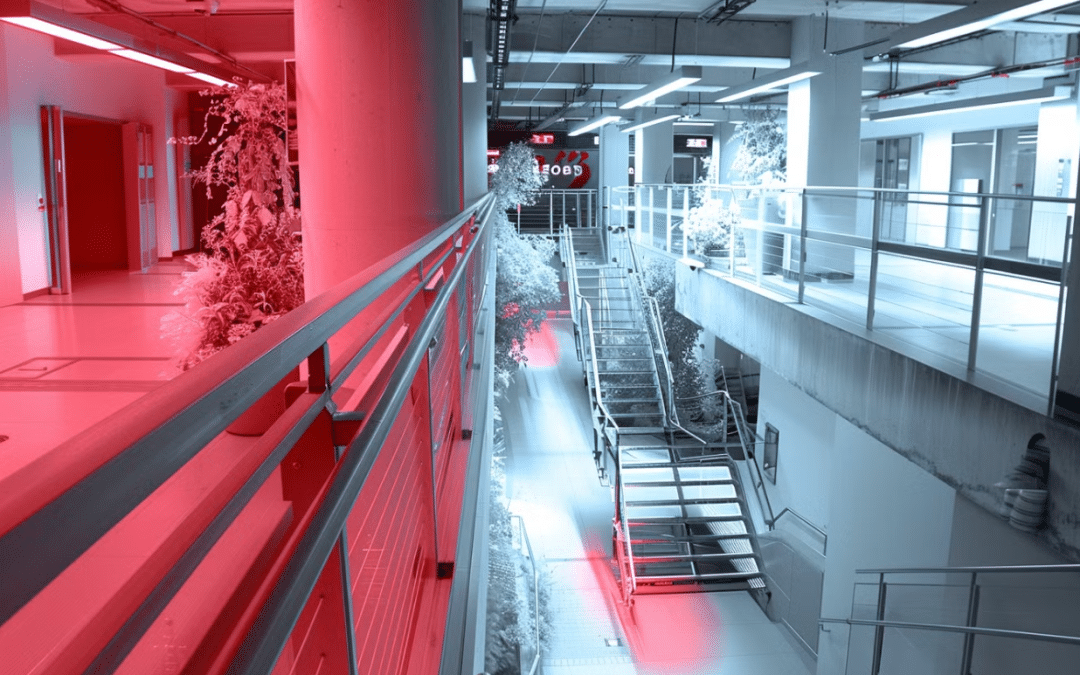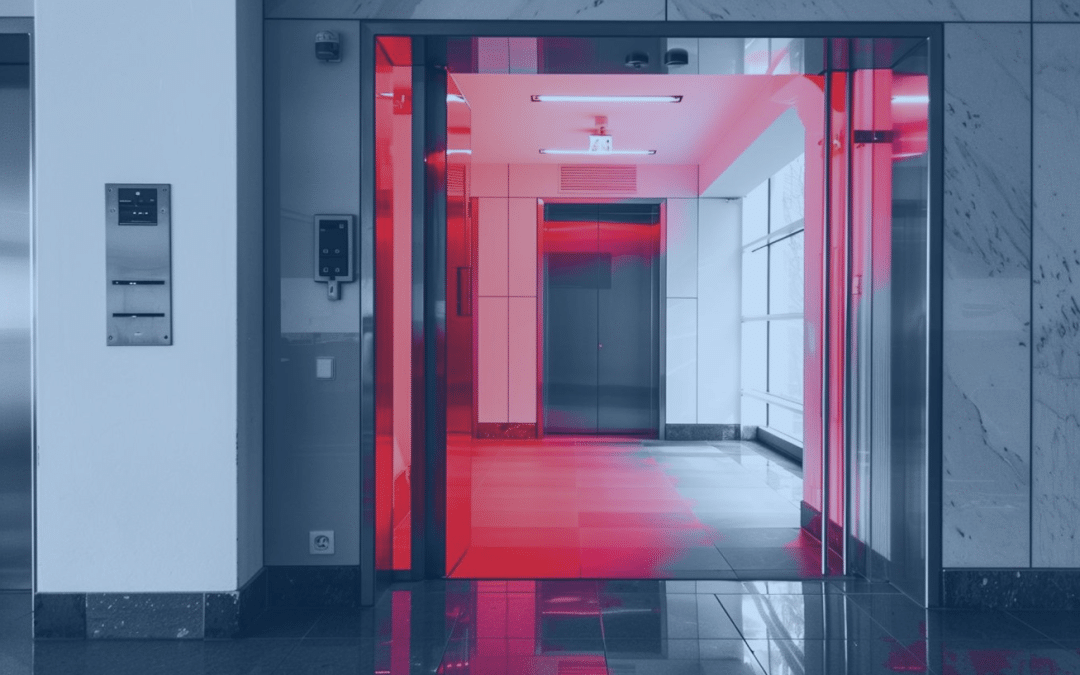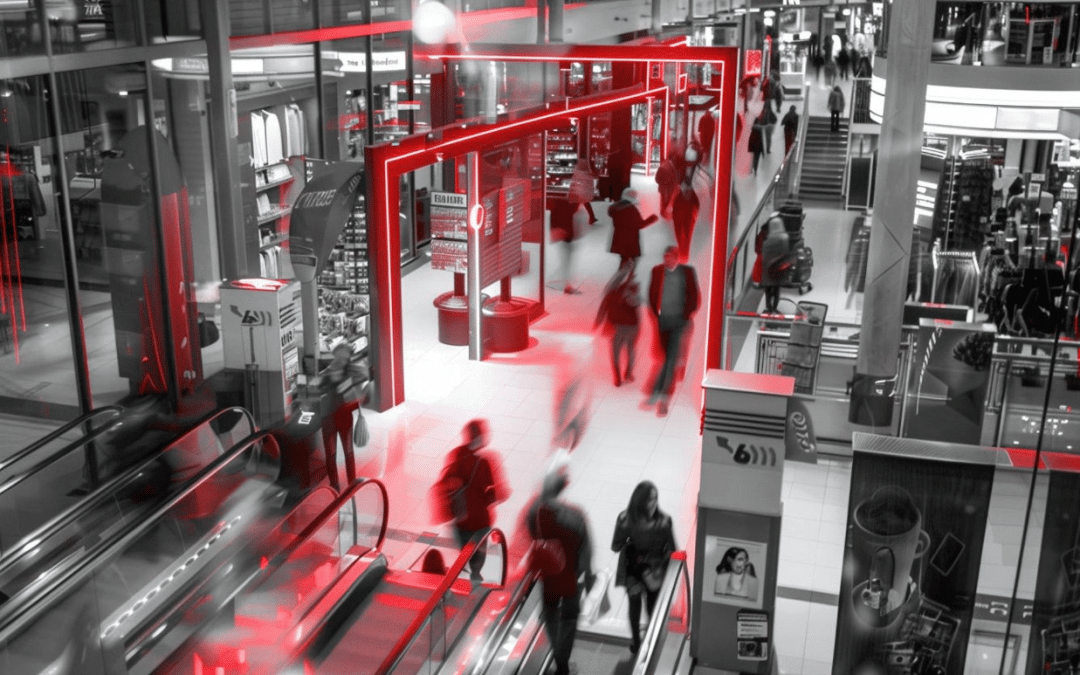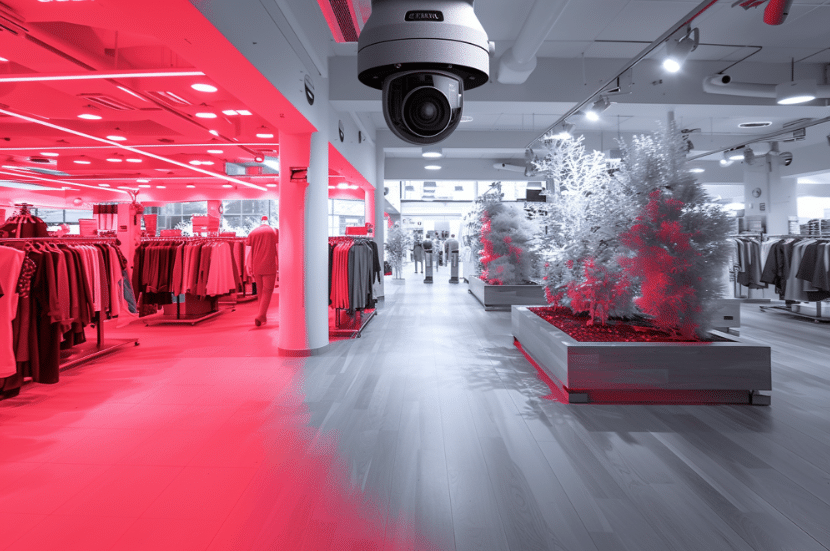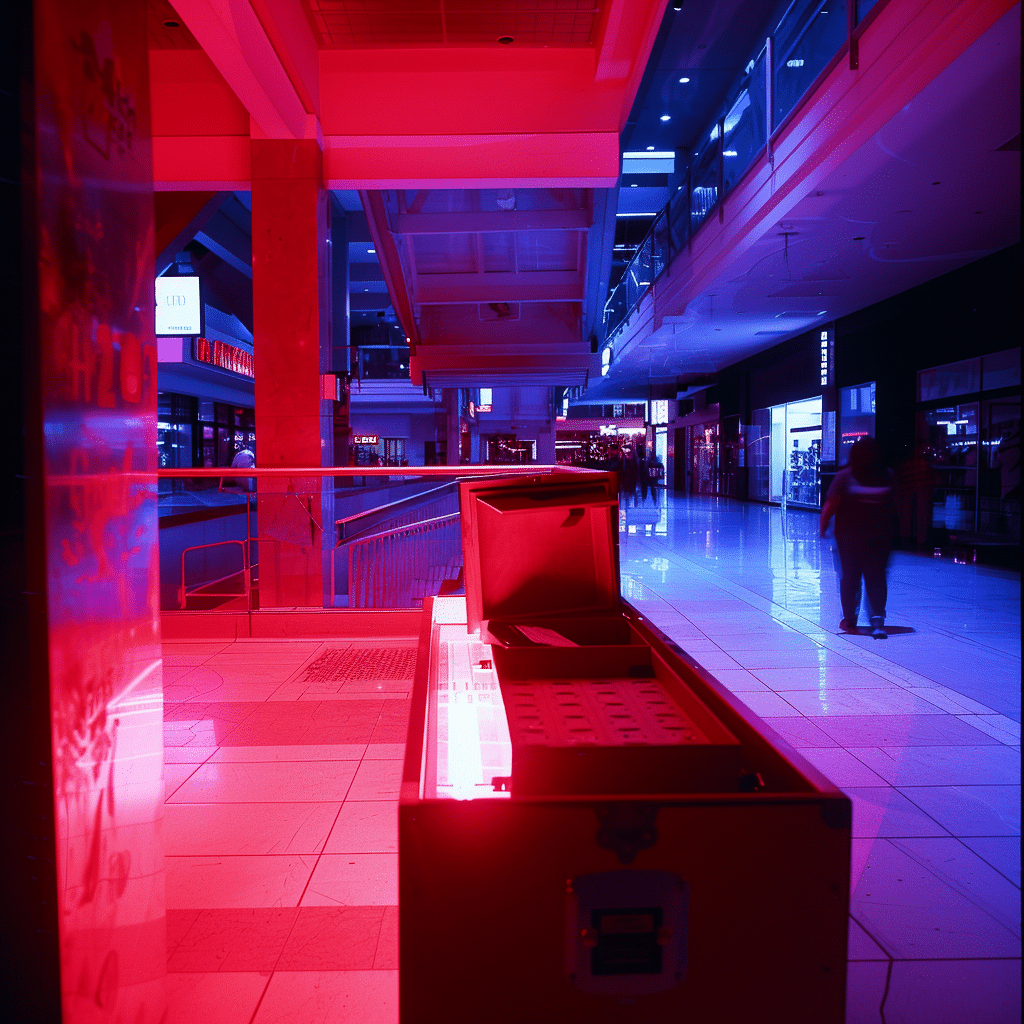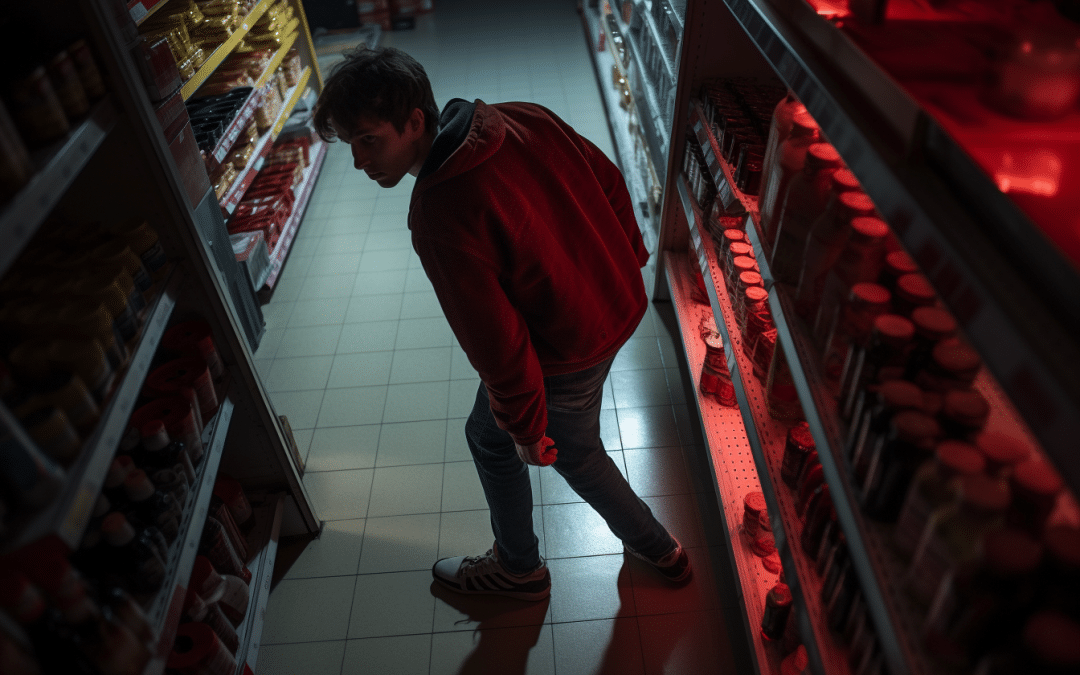1. Choosing the right security system
Assessing the building's specific needs
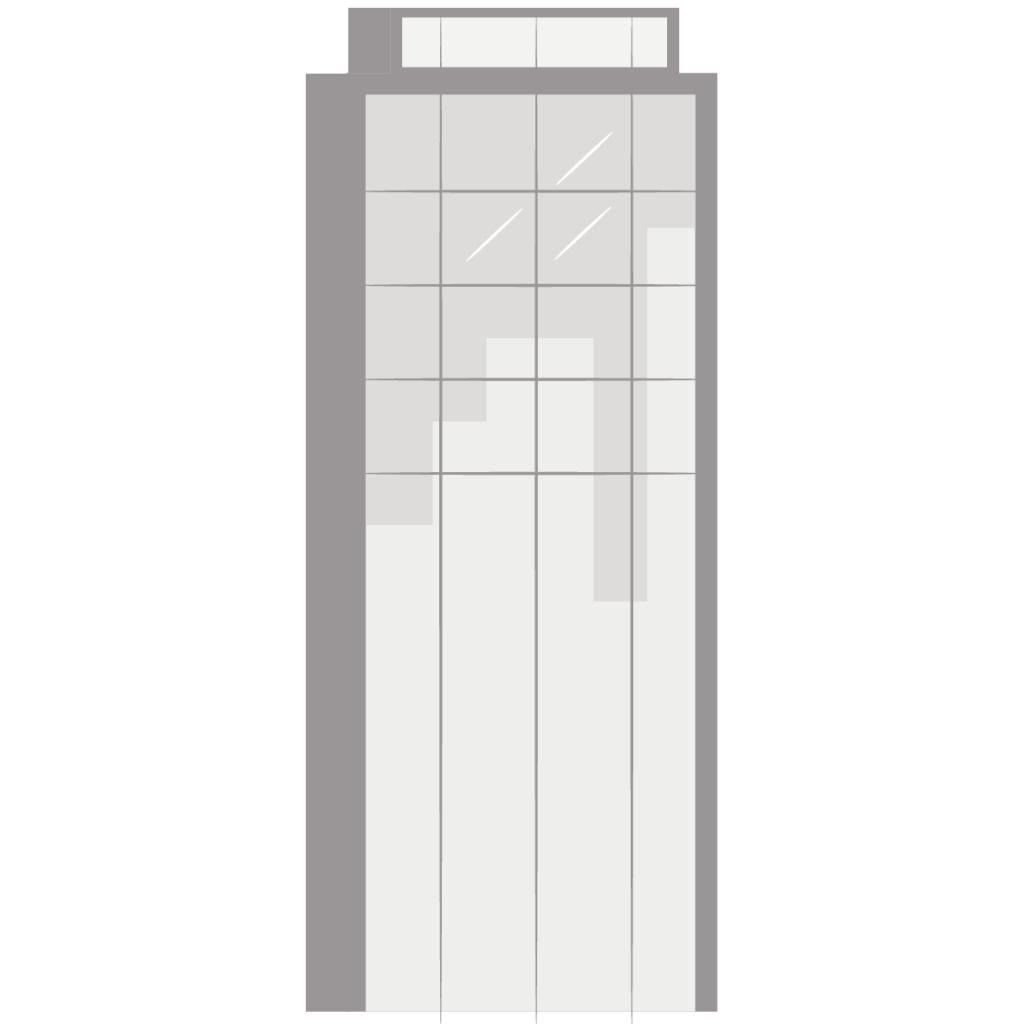
Before even considering thesafety installationIt's essential to understand your building's needs. A common mistake is to choose a security system too complex or, on the contrary, too minimalist for the characteristics of the location. Each building - whether a public-access establishment (ERP)The constraints of each type of facility - whether it's a warehouse, a logistics center or a small retail outlet - vary according to visitor flows, the value of the goods to be protected, the type of access, the hours of operation, etc.
It is therefore essential to perform a technical and functional assessment upstream, by asking the right questions:
- What are the sensitive areas to watch out for?
- Is the site exposed to specific risks (intrusion, fire, vandalism)?
- What is the desired level of autonomy for staff in managing alerts?
- How often can maintenance work be carried out?
Safety audits can help to identify vulnerabilities invisible to the naked eye. According to a study by the Observatoire national de la délinquance et des réponses pénales, more than 40 % of intrusions recorded in companies concern sites that are poorly equipped or unsuitable in terms of security (source: ONDPR, 2023 Report).
Finally, this preparatory phase allows us to adapt not only the technology employee, but also theelectrical installation necessary (especially for wired devices) or compatibility with existing systems.
Compare the different technologies available
Another common mistake in theinstallation of a security system is not to take the time to compare the various available technologies on the market. Today's solutions are numerous and rapidly evolving: intelligent video surveillance, motion detection, intruder alarms, biometric access control, connected sensors or even electronic security remote-controlled.
Each type of device has its advantages, but also its limitations. For example, a IP camera High-definition video is ideal for real-time monitoring and event archiving, but requires a stable Internet connection and good storage capacity or a secure cloud. Conversely, a stand-alone alarm system is inexpensive and easy to install, but not much of a deterrent if no human relay or remote monitoring is provided.
The mistake would be to choose solely on the criterion of price or the popularity of a device without considering its suitability for real need of the site. It is crucial to define safety targetsdetect, alert, deter or control access.
In a professional context, relying on scalable technologies and compatible with each other also helps to anticipate future needs (extension, integration into a centralized technical management system, compliance, etc.). That's why it's a good idea to consult a safety professional for a tailor-made approach in line with current standards.
Take into account current standards and regulations
One of the most common pitfalls in theinstallation of a security system is to neglect the current regulations. But when it comes to protecting people and propertythe law imposes strict rules, in particular on establishments open to the public (ERP)industrial sites or business premises.
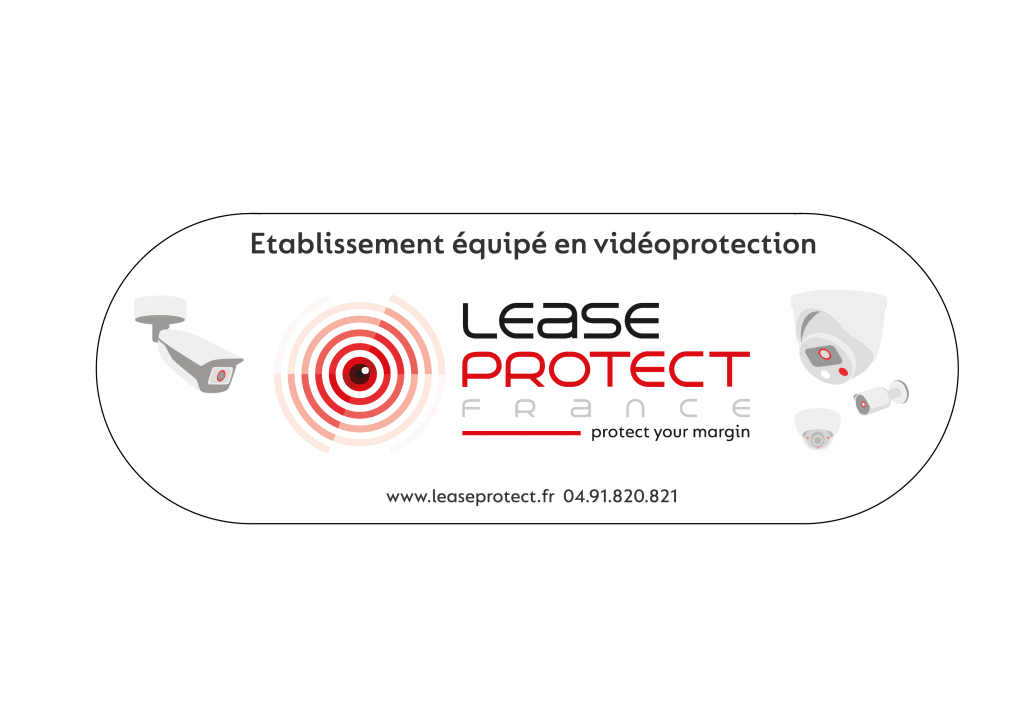
For example, according todecree of June 25, 1980 relating to fire safety in public buildings, certain buildings must be equipped with audible alarm devicesof smoke detectorsand have marked evacuation routes. Similarly, the Labor Code provides for specific obligations in terms of personnel safetysuch as the presence of intrusion detectionor visual signalling and sound for major hazards.
A electrical installation poorly executed, a non-conforming material or absence of SAFETY may not only result in the manager's liability in the event of an incident, but may also entail sanctions in the event of an inspection by the prefecture or emergency services.
That's why it's essential to find out more about applicable standards to its type of activity standard NF S 61-936 for fire alarms, standard EN 50131 for intruder alarm systems, or even local regulations in urban planning and power networks.
Calling in a security installation expert to guarantee the compliance of the devices right from the project design stage, while ensuring safe commissioning and documented.
2. Key steps in security installation
Planning the installation project
A safety installation always begins with a rigorous planning. All too often, companies underestimate this stage, resulting in extra costs, delays and sometimes even inefficient installations. The aim is to build a clear plan of actionaligned with identified needs and site constraints.
The first step is to establish a precise specifications What are the risks to be covered (theft, intrusion, fire, unauthorized access)? What are the types of premises to be protected (offices, storage areas, ERP, technical housing)? Which level of safety is expected? These elements will help guide the choice of technical features : alarm systems, video surveillance, motion detectorsor access control.
Once the perimeter has been defined, a deployment scheduletaking into account delivery times electrical installation and potential business interruptions during construction. Poor anticipation can have a detrimental effect on productivity and expose the company to temporary increased risks.
At this stage, the coordination with other trades is essential, especially for new buildings and renovations. From the outset, it is advisable to involve a professional in electronic securityto ensure perfect technical integration and regulatory.
Carry out a preliminary diagnosis of the premises
Before any safety installationa site diagnosis is essential. This step enables us to precisely identify risk areasevaluate building specifications and detect possible non-conformities.
This diagnosis is based on several elements:

- L'access analysis (doors, windows, parking lots, service lanes) to anticipate the risk of a fire.intrusion orbreak-in.
- Taking into account building layout : partitions, floors, false ceilings, corridors... Each element can influence the device selection.
- The state ofexisting electrical installationThis is essential to ensure reliable power supply to electronic systems (cameras, sensors, control units).
- Traffic flows from staffand visitors and deliveriesto adapt the access control without interfering with day-to-day operations.
- Visit regulatory obligations in force, particularly in ERP (establishments open to the public), where fire safety standards andevacuation must be strictly adhered to.
The diagnosis also identifies hot spots where special equipment is required: smoke detectors, fire alarm systems, 24/7 video surveillanceor alert buttons.
Finally, this stage prepares the complianceby ensuring that future equipment complies with the current standards (NF C 15-100, fire safety regulations, Labor Code). A full technical auditoften carried out by a certified professional, helps to guarantee the reliabilitythe durability and the safety system performance installed.
Install cabling and devices
Once the diagnosis has been made, it's time to move on to thetechnical step of the installation: laying the wiring and safety equipment. The complexity of this phase is often overlooked, yet it plays a central role in the reliability and the durability of the entire system.
The wiringwhether electrical or dedicated to data, must meet several criteria:
- Compliance with NF C 15-100 standardparticularly in terms of earthing and overload protection.
- Anticipation of future needs: by providing additional conduits or connection points, you can avoid additional costs for later additions.
- Respect for safe distances to limit interference, particularly between video surveillance cables and conventional power lines.
On the devicesTheir choice depends on the type of building and the risks identified:
- Video surveillance cameraswith or without infrared vision, suitable for both indoor and outdoor areas.
- Motion sensors or vibration, useful in warehouses, storerooms or sensitive areas.
- Burglar alarm connected to a control unit with GSM or IP transmission, for immediate response in the event of an alarm.
- Smoke and heat detectorswhich are mandatory in many establishments open to the public.
- Access controlwith badges, codes or biometrics, to secure entrances and restrict access to certain areas to authorized members only.
A crucial point not to be underestimated: theemergency power supply. In the event of a power cut, equipment must remain functional. That's why the integration of a inverter or a battery backup is recommended, or even required in some cases. Finally, each installation must be subject to a clear technical documentationincluding a wiring diagram, equipment operating instructions and a maintenance plan.
Conclusion
Implementing a safety installation is not a task to be taken lightly. Whether it involves protecting employeesof preserve material assets or ensure regulatory complianceEvery decision - from the choice of equipment to its maintenance - must be carefully considered.
The most common mistakes, such as underestimating the risks, failing to comply with current standards or choosing unsuitable equipment, can have serious consequences: vulnerability to intrusion, loss of sensitive data, and even legal liability for the company.
On the other hand, a structured approachassociated with a professional supportThis allows us to design a tailor-made, efficient and scalable solution. Respecting key stages, involving the right technical skills and integrating a maintenance plan are the cornerstones of a successful installation.
Would you like to secure your premises, your ERP or your real estate assets while optimizing your budget and resources? A personalized audit with Lease Protect France can be the first step towards reliable installationin line with safety standards current.
